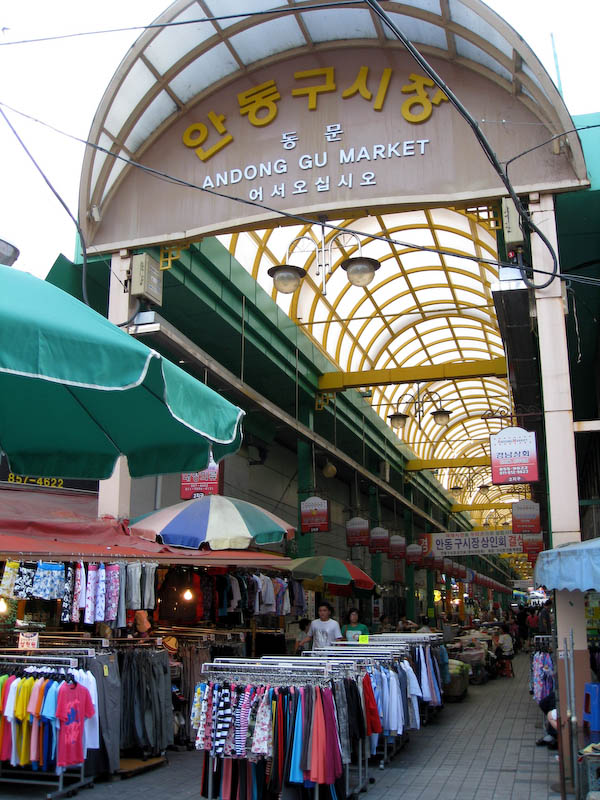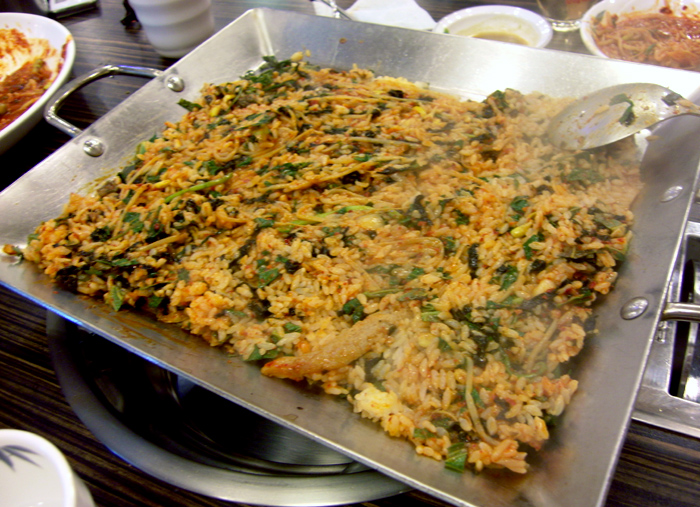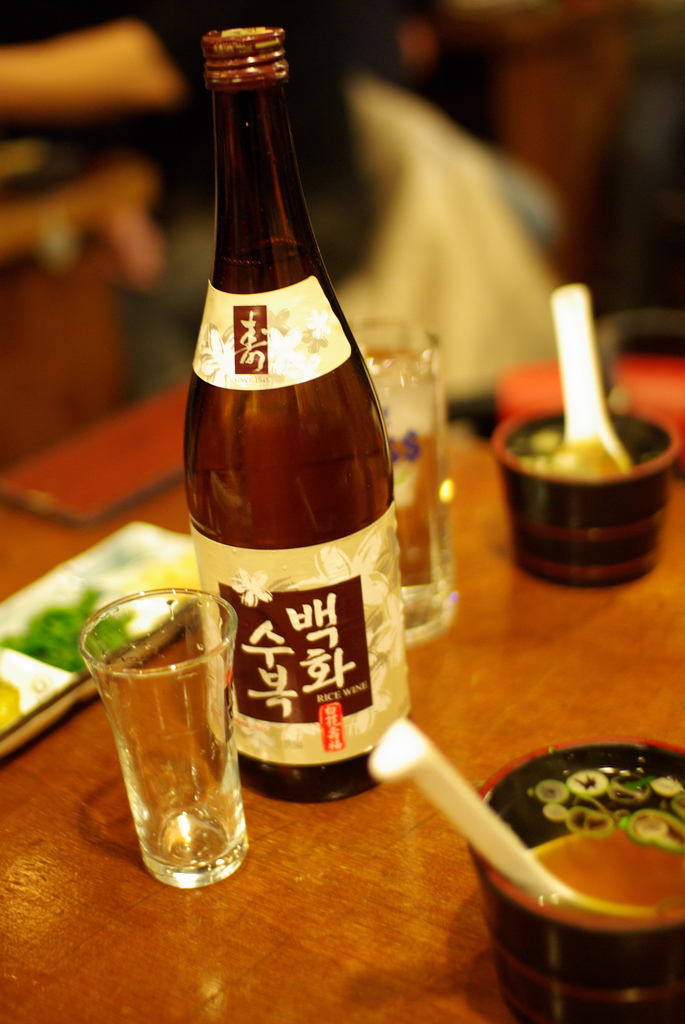|
Jjim
''Jjim'' (찜; ) is a Korean cuisine term referring to dishes made by steaming or boiling meat, chicken, fish, or shellfish which have been marinated in a sauce or soup. The cooking technique originally referred to dishes cooked in a '' siru'' (시루, earthenware steamer mainly used for making ''tteok'') by steaming. However, the name ''jjim'' has now come to imply a finished dish with a steamed appearance. The cooking method for most ''jjim'' dishes nowadays has changed to boiling the ingredients in broth and reducing the liquid.''Jjim'' at Nate Encyclopedia Pressure cookers are popular for making ''jjim'' as well. Lee, Y ... [...More Info...] [...Related Items...] OR: [Wikipedia] [Google] [Baidu] |
Andong Jjimdak
Andong-jjimdak () is a variety of ''jjim'' (a Korean steamed or boiled dish), which originated in the city of Andong, Gyeongsangbuk-do Province and is made with chicken, various vegetables marinated in a ''ganjang'' (Korean soy sauce) based sauce. The name literally means "steamed chicken of Andong." Origin There are many speculations on the origin of the dish. One is that it is a specialty food of the inner rich village of Andong during the Joseon period, prepared and eaten for special occasions. Another assumption is that during the 1980s in the ''Dak golmok'' (닭골목, literally "chicken alley") of the "Andong Gu Market," restaurant owners there made a dish including ingredients that regulars demanded, which became the current ''Andong-jjimdak''. The most plausible speculation among existing assumptions is that merchants of the ''Dak golmok'' at the market created the dish to keep their position against the rapid expansion of Western fried chicken shops. Preparations ... [...More Info...] [...Related Items...] OR: [Wikipedia] [Google] [Baidu] |
Galbijjim
Galbi-jjim * () or braised short ribs is a variety of '' jjim'' or Korean steamed dish made with ''galbi'' (갈비, short rib). ''Galbijjim'' is generally made with beef or pork (돼지, dweji) short ribs. In the latter case, it is called ''dweji galbijjim'' (돼지갈비찜). Galbijjim at Doosan Encyclopedia History In traditional cuisine, ''galbijjim'' was traditionally eaten at '''' along with '''', '' |
Korean Cuisine
Korean cuisine has evolved through centuries of social and political change. Originating from ancient agricultural and nomadic traditions in Korea and southern Manchuria, Korean cuisine reflects a complex interaction of the natural environment and different cultural trends. Korean cuisine is largely based on rice, vegetables, seafood and (at least in South Korea) meats. Dairy is largely absent from the traditional Korean diet. Traditional Korean meals are named for the number of side dishes (반찬; 飯饌; '' banchan'') that accompany steam-cooked short-grain rice. Kimchi is served at nearly every meal. Commonly used ingredients include sesame oil, ''doenjang'' (fermented bean paste), soy sauce, salt, garlic, ginger, '' gochugaru'' ( pepper flakes), ''gochujang'' (fermented red chili paste) and napa cabbage. Ingredients and dishes vary by province. Many regional dishes have become national, and dishes that were once regional have proliferated in different variat ... [...More Info...] [...Related Items...] OR: [Wikipedia] [Google] [Baidu] |
Gyeranjjim
''Gyeran-jjim'' (), ''Dalgyal-jjim'' () or steamed eggs is a type of '' jjim'', Korean steamed dish. * It is a custardy, casserole-like ''banchan'' (side dish), often seasoned with ''saeu-jeot'' (salted shrimp) or ''myeongnan-jeot'' (salted pollock roe) and topped with scallions and toasted sesame seeds. The ideal ''gyeran-jjim'' is light and fluffy. Preparation and types There are several ways to cook ''gyeran-jjim''. It can be steamed, double-boiled, or boiled in a stovetop-safe crock on a very low heat. For faster cooking, some people microwave the bowl. Eggs are sieved, and whisked with water until the mixture are completely blended in a cream-like consistency. Sometimes, kelp and/or anchovy broth is used in place of water for a richer flavor. Optional ingredients include mushrooms, peas, onions, Korean zucchini, carrots, and other vegetables for their own twist on the dish. The dish is then seasoned with ''saeu-jeot'' (salted shrimp), ''myeongnan-jeot'' (salted pollock ... [...More Info...] [...Related Items...] OR: [Wikipedia] [Google] [Baidu] |
Agujjim
''Agwi-jjim'' * () or ''agu-jjim'' () is a Korean cuisine, Korean ''jjim'' dish made with Lophiomus setigerus, blackmouth angler, the fish known as ''agwi'' in Korean. The name of the dish is usually translated as "braised spicy angler". The dish is seasoned with hot chili pepper powder, doenjang, ''ganjang'' (Soy sauce#Korean, soy sauce), minced garlic, and chopped scallions to make it spicy and hot. However, other ingredients such as ''kongnamul'' (soybean sprouts), ''mideodeok'' (미더덕, ''Styela clava''), and ''minari'' (미나리, ''Oenanthe javanica'') also play an important role in giving ''agujjim'' a refreshing and fragrant flavor. The fish is an excellent source of protein and a has rich taste as well as a palatable chewy texture. History Its origins are known to be a fish market in the city of Masan, South Gyeongsang Province where local fishermen would ask cooks from the market eateries to create a tasty dish from the ugly fish. Until the 1940s, the fish was n ... [...More Info...] [...Related Items...] OR: [Wikipedia] [Google] [Baidu] |
Marinate
Marinating is the process of soaking foods in a seasoned, often acidic, liquid before cooking. The origin of the word alludes to the use of brine (''aqua marina'' or sea water) in the pickling process, which led to the technique of adding flavor by immersion in liquid. The liquid in question, the marinade, can be either acidic (made with ingredients such as vinegar, lemon juice, or wine) or enzymatic (made with ingredients such as pineapple, papaya, yogurt, or ginger), or have a neutral pH. In addition to these ingredients, a marinade often contains oils, herbs, and spices to further flavor the food items. It is commonly used to flavor foods and to tenderize tougher cuts of meat. The process may last seconds or days. Marinades vary between different cuisines. Marinating is similar to brining, except that brining generally does not involve a significant amount of acid. It is also similar to pickling, except that pickling is generally done for much longer periods, primaril ... [...More Info...] [...Related Items...] OR: [Wikipedia] [Google] [Baidu] |
Rice Wine
Rice wine is an alcoholic beverage fermented and distilled from rice, traditionally consumed in East Asia, Southeast Asia and South Asia. Rice wine is made by the fermentation of rice starch that has been converted to sugars. Microbes are the source of the enzymes that convert the starches to sugar.Huang, H. T. "Science and civilization in China. Volume 6. Biology and biological technology. Part V: fermentations and food science." (2000). Rice wine typically has an alcohol content of 18–25% ABV. Rice wines are used in East Asian, Southeast Asian and South Asian gastronomy at formal dinners and banquets and in cooking. List of rice wines See also * Beer * Rice wine cup * Japanese rice wine * Korean alcoholic beverages * Chinese alcoholic beverages References Further reading * Campbell-Platt, Geoffrey (2009)''Food Science and Technology'' John Wiley & Sons John Wiley & Sons, Inc., commonly known as Wiley (), is an American multinational publishing company foun ... [...More Info...] [...Related Items...] OR: [Wikipedia] [Google] [Baidu] |
Cheongju (wine)
''Cheongju'' (; literally "clear wine"), sometimes romanized as ''Chungju'', is a clear, refined rice wine of Korean origin. Names The word ''cheongju'' () consists of two characters: ''cheong'' () meaning "clear" and ''ju'' () meaning "alcoholic drink". It contrasts with ''takju'' (), as "tak" () means "turbid". The word ''takju'' usually refers to ''makgeolli'' (milky, unrefined rice wine). The hanja characters 淸酒 are the same as the kanji pronounced ''seishu'' used on the labels of sake. The native Korean word for "clear wine", ''malgeun-sul'' (), is also used to refer to ''cheongju''. Another name for ''cheongju'' is ''yakju'' (), which literally translates into "medicinal wine". History According to '' Things on Korea''—a 12th-century book on Korea written by Song Chinese scholar Sun Mu (孫穆)—the Goryeo people used non-glutinous rice to brew rice wine. Another 12th-century Chinese book, '' Illustrated Account of Goryeo'', reports that Korean rice wine th ... [...More Info...] [...Related Items...] OR: [Wikipedia] [Google] [Baidu] |
Ganjang
Soy sauce (also called simply soy in American English and soya sauce in British English) is a liquid condiment of Chinese origin, traditionally made from a fermented paste of soybeans, roasted grain, brine, and ''Aspergillus oryzae'' or '' Aspergillus sojae'' molds. It is considered to contain a strong umami taste. Soy sauce in its current form was created about 2,200 years ago during the Western Han dynasty of ancient China, and it has spread throughout East and Southeast Asia where it is used in cooking and as a condiment. Use and storage Soy sauce can be added directly to food, and is used as a dip or salt flavor in cooking. It is often eaten with rice, noodles, and sushi or sashimi, or can also be mixed with ground wasabi for dipping. Bottles of soy sauce for salty seasoning of various foods are common on restaurant tables in many countries. Soy sauce can be stored at room temperature. History East Asia China Soy sauce (, ) is considered almost as old as soy ... [...More Info...] [...Related Items...] OR: [Wikipedia] [Google] [Baidu] |
Abalone
Abalone ( or ; via Spanish , from Rumsen ''aulón'') is a common name for any of a group of small to very large marine gastropod molluscs in the family Haliotidae. Other common names are ear shells, sea ears, and, rarely, muttonfish or muttonshells in parts of Australia, ormer in the UK, perlemoen in South Africa, and paua in New Zealand. Abalones are marine snails. Their taxonomy puts them in the family Haliotidae, which contains only one genus, '' Haliotis'', which once contained six subgenera. These subgenera have become alternate representations of ''Haliotis''. The number of species recognized worldwide ranges between 30 and 130 with over 230 species-level taxa described. The most comprehensive treatment of the family considers 56 species valid, with 18 additional subspecies. The shells of abalones have a low, open spiral structure, and are characterized by several open respiratory pores in a row near the shell's outer edge. The thick inner layer of the shell is compose ... [...More Info...] [...Related Items...] OR: [Wikipedia] [Google] [Baidu] |
Sea Bream
The Sparidae are a family of fish in the order Perciformes, commonly called sea breams and porgies. The sheepshead, scup, and red seabream are species in this family. Most sparids are deep-bodied compressed fish with a small mouth separated by a broad space from the eye, a single dorsal fin with strong spines and soft rays, a short anal fin, long pointed pectoral fins and rather large firmly attached scales. They are found in shallow temperate and tropical waters and are bottom-dwelling carnivores. There are hermaphrodites in the Sparidae. Protogyny and protandry appear sporadically through this lineage of fish. Simultaneous hermaphrodites and bi-directional hermaphrodites do not appear as much since Sparidae are found in shallower waters. Species of fish that express a hermaphroditic condition usually "lack a genetic hardwire", therefore ecological factors play a role in sex determination. Most species possess grinding, molar-like teeth. Eating the head is known to cause ... [...More Info...] [...Related Items...] OR: [Wikipedia] [Google] [Baidu] |
South Gyeongsang Province
South Gyeongsang Province ( ko, 경상남도, translit=Gyeongsangnam-do, ) is a province in the southeast of South Korea. The provincial capital is at Changwon. It is adjacent to the major metropolitan center and port of Busan. The UNESCO World Heritage Site Haeinsa, a Buddhist temple that houses the ''Tripitaka Koreana'' and tourist attraction, is located in this province. Automobile and petrochemical factories are largely concentrated along the southern part of the province, extending from Ulsan through Busan, Changwon, and Jinju. Etymology The name derives ; . The name derives from the names of the principal cities of Gyeongju () and Sangju (). History Before 1895, the area corresponding to modern-day South Gyeongsang Province was part of Gyeongsang Province, one of the Eight Provinces of Korea during the Joseon dynastic kingdom. In 1895, southern Gyeongsang was replaced by the districts of Jinju in the west and Dongnae (modern-day Busan) in the east. In 1896, they were mer ... [...More Info...] [...Related Items...] OR: [Wikipedia] [Google] [Baidu] |








